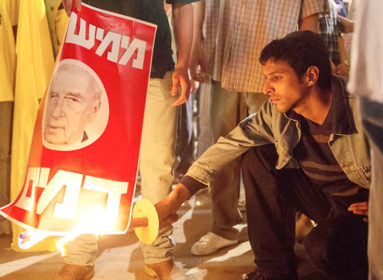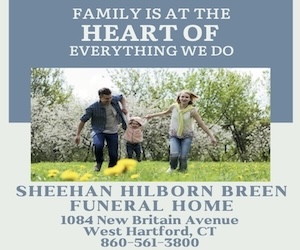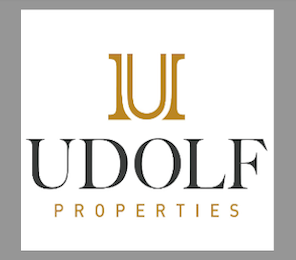
By Judie Jacobson
WEST HARTFORD — “Like most Jewish communities, the Greater Hartford community is changing. If we are to continue to grow and maintain our vitality we must better understand who makes up our community, appreciate how they interact and experience Jewish life, what they value and what they believe is needed to enhance their Jewish journey.”
That’s what Howard Sovronsky, President/CEO of the Jewish Federation of Greater Hartford, told the Ledger in May 2016, as he announced the launch of a JMAP, a community-wide study designed to help the Jewish community navigate its future by understanding its current makeup and needs.
The study, co-sponsored by the Federation and the Jewish Community Foundation of Greater Hartford in partnership with Jewish agencies, synagogues and others, and conducted by the market research company, The Melior Group, reported information about the needs, values, and priorities in the Greater Hartford Jewish community, gathered by means of a confidential, anonymous online survey that took place last June.
Recently, the Federation and Foundation held a series of information sessions throughout the Greater Hartford area to report to the Jewish community the findings of JMAP and outline the next steps to be taken.
The Ledger spoke with Sovronsky and Michael Johnston, CEO of the Jewish Community Foundation of Greater Hartford, to find out what they had to say.
JEWISH LEDGER (JL): Can you tell us how the study came about and what it entailed?
Howard Sovronsky (HS): The last time we conducted a study of the community was in 2000. It was a demographic study that basically counted heads. And there was apparently not much use for the study as it was probably intended. At this point, it was felt it would be more important for us to learn more about what people thought, what their views were, what they were passionate about; to more look at the quality of our community rather than the number of Jews living here.
JL: How would you describe the study?
Michael Johnston (MJ): One of the things that is critical in the process of trying to be grant-makers to the Jewish community is having the right feedback – to be able to understand what the needs of the community are and how those needs have changed over time, because we all know communities aren’t stagnant. They change over long periods of time. So JMap was really an effort to gather some very specific data about the interests, needs, desires, challenges and perceptions of the Jewish community, as a vehicle for teaching all of us about what the community is, and giving us some data around which we can begin thinking about how to plan for the needs of the community for the long term.
Perhaps the most important thing about the study is that it is not a single, one-time stagnant data search. It is going to lead to what we call the Community Health and Vibrant Dashboard, which is a tool for an ongoing and dynamic way of monitoring and tracking the health and vibrancy of the Jewish community over long periods of time; a tool that we can use continuously and repeatedly over a number of years to help us guide our decision-making regarding the community.
We really want to build a dynamic tool that the Foundation and Federation can use over a long period of time.
JL: How was the study conducted?
MJ: It was a two-month intensive survey process that included mass large scale electronic surveying of the community but also included individualized meetings. The Melior Group helped facilitate focus groups and forums of members of the community in which they could delve into issues and ideas in a more in-depth way.
HS: It was really a concerted effort to try to reach those individuals who identify as Jewish but who are not affiliated with any Jewish institution, and to try to capture their views of the Jewish community from their perspective. So we tried to go outside of what we refer to commonly as the “core” – to listen and hear from people who otherwise we would not have contact with.
JL: Did you discover why these people feel disconnected from the community?
HS: I think there were a variety of reasons.
I think we sometimes misinterpret unaffiliated as uncaring. We discovered in many cases that though they may not be affiliated, they have a deep yearning for a connection to their Jewish heritage. It may not be religious – but it may be more spiritual or more cultural. And they are searching for other ways to connect that may not be available in our current community.
MJ: There are 1.2 million pieces of data that are [going to be gathered] from the survey, so this is going to be, probably, a yearlong process of delving more deeply into targeted areas of understanding the survey. As you can imagine from the scale of it, it is a complex undertaking to analyze all of this data, but I suspect that over the course of the year we will be delving more deeply into their thinking about specific kinds of issues. But I would echo what Howard said: There is a strong sense from the preliminary data that this is a group that yearns for a connection to their Jewish identity and to their Jewish community. But perhaps not in the way we are currently offering.
JL: Did you have the support of other Jewish institutions in the area?
HS: We met with all of them before the survey was rolled out to explain to them the importance of the survey and how this survey ultimately could help them in their own individual organizational planning. Because this data can be stratified based on certain very specific requests based on geography, affiliation, etc. — elements that may be of most value for a particular synagogue or school to better understand their constituency.
MJ: That was actually one of the reasons why that audience of institutions was so supportive of it, because now with all of this data, we can provide customized reporting to them on people who are in their geographic regions. For them this might be a very eye-opening set of data.
JL: Can you share with us some of your findings? Anything that might surprise us?
MJ: I think we are still trying to understand the nature of all of that JMap is telling us. But we can see, and you will see as we start to roll out some of the summary data, that there are changing sub-regions demographically in Greater Hartford. There is a sense that there is some growth occurring east of the river. There is a sense that there is some stabilization perhaps in the Farmington Valley for example. But there are lots and lots of data here still to sort through before we know.
HS: It is premature for us to just put out the conclusions. That’s why we are framing this “The Year of Learning” so that we can absorb not only the data, but the interpretation of the data has for our community. I am most excited because the Federation has been moving the last two years to elevate planning to a more prominent role. JMap will offer us the opportunity to create a roadmap. It may take a year, but it will give us some objective data that we can use as guideposts in advising our lay leadership and our community about how the money that we collect should be distributed in terms of its greatest impact and positive change.
JL: As you move forward, will you continue to seek the involvement of the community in this process?
MJ: We see this process as a collaborative one with the community. One of the things we want to try to avoid is going to the community and saying, “Here’s what you are, or here is what the survey says.” I think what we would like to do is engage the community in a conversation around some of the data points and around some of the findings and say, “What do you think it means?”
We would like this to become a public, community conversation about the nature of the Jewish community, and about our needs on an ongoing basis. Frankly, the discussion is almost as important as the data itself, because it will lure people, we hope, into some meaningful conversations that could lead to some very interesting, positive places relative to participation in the community and decision-making and planning. All really important stuff. It is about all of us as a communiuty, not each of us individually as institutions. So we really want to have a broad community conversation.








 Southern New England Jewish Ledger
Southern New England Jewish Ledger











